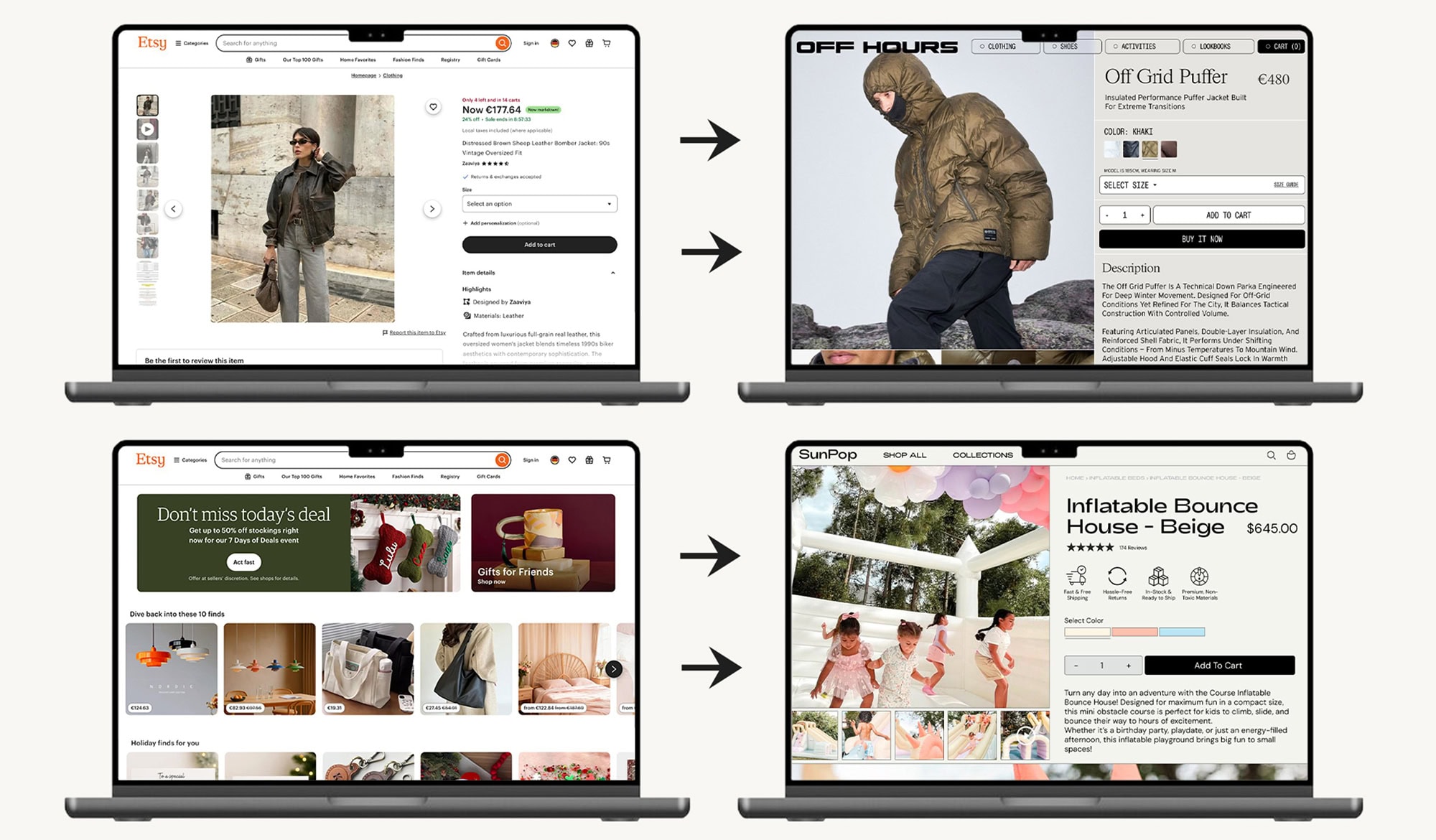Expanding your Shopify store into multiple countries doesn’t have to be complicated — if you use the right tools.
Shopify Markets is Shopify’s built-in international selling platform that helps you manage pricing, languages, currencies, domains, and taxes for each region — all in one place.
Instead of juggling multiple stores for Europe, Asia, or the US, Shopify Markets lets you run a single storefront that automatically adapts to each shopper’s location.
If you’re looking to scale your Shopify brand across Europe or other global markets, this guide will show you exactly how to set up Shopify Markets correctly — and how to avoid common pitfalls that can cost you time and sales.
What Is Shopify Markets and Why It Matters
Shopify Markets allows you to sell globally from one store while providing a localized shopping experience for each market.
It handles the heavy lifting for international expansion — including:
• Market grouping (e.g., DACH, CEE, Nordics)
• Local currency pricing
• Market-specific domains or subfolders
• Local languages and translations
• Country-specific tax and VAT settings
• Shipping and payment method customization
For European sellers, it’s a game-changer — especially when you want to manage multiple countries efficiently without running five different stores.
Enabling Markets and Creating Market Groups
By default, Shopify creates a Primary Market (your home country) and a Single International Market for everyone else. But you can and should split your international markets into groups for better control.
Example market groups for Europe:
• DACH: Germany, Austria, Switzerland
• CEE: Hungary, Poland, Czech Republic, Slovakia
• Nordics: Sweden, Denmark, Finland, Norway
• Southern Europe: Italy, Spain, Portugal
Step-by-step setup:
- In your Shopify Admin, go to Settings → Markets.
- Click Add Market.
- Choose the countries or regions you want to group together.
- Name your market group (for example, “DACH”).
- Save.
This structure lets you tailor pricing, taxes, shipping, and languages for each market cluster.
Setting Up Localized Pricing, Languages, and Domains
Once your markets are created, you can localize the experience for each one.
Pricing:
Shopify automatically converts prices based on live exchange rates. But you can set manual adjustments (+/- %) to account for regional costs, taxes, or competition.
Go to Settings → Markets → (Market) → Products and Pricing to adjust your prices.
Languages:
Use Shopify Translate & Adapt to add localized languages to each market.
For example, your DACH market can have German, your CEE market Hungarian or Polish, and your Nordics market Swedish.
This builds trust and improves conversion rates instantly.
Domains:
You can assign a dedicated domain, subdomain, or subfolder to each market for SEO and clarity.
Examples:
• Subfolder: example.com/de
• Subdomain: de.example.com
• Country domain: example.de
For most EU brands, subfolders are best — they’re easier to manage, keep your SEO authority unified, and are supported natively by Shopify.
Subfolders vs Subdomains vs ccTLDs — Pros and Cons
Subfolders (example.com/de)
• Easiest to manage and best for SEO
• Single domain authority
• Shopify handles hreflang automatically
Recommended for most brands
Subdomains (de.example.com)
• Good separation between markets
• Slightly weaker SEO performance
• More manual setup needed
ccTLDs (example.de)
• Highest local trust (especially in Germany or France)
• Strong SEO in that specific country
• Requires more maintenance and separate domain registration
If you’re expanding across Europe, start with subfolders — you can always switch later if you build large, market-specific operations.
Configuring Payment Methods Per Market
Different countries prefer different payment methods — ignoring this can hurt conversions.
For example:
• Germany → Klarna, PayPal
• Netherlands → iDEAL
• Nordics → MobilePay
• Central Europe → Cash on Delivery still common
In Settings → Payments, activate local payment options under Shopify Payments or third-party providers.
Shopify Payments supports major European methods, including:
- Klarna
- Bancontact
- Sofort
- iDEAL
- EPS
- Giropay
Enable these for each market group so customers can pay the way they prefer.
Integrating Shipping Zones and Rates
Shipping is often the biggest challenge in international expansion — but Shopify makes it manageable.
To set up regional rates:
- Go to Settings → Shipping and Delivery.
- Under Shipping Zones, create zones matching your market groups (e.g., DACH, Nordics).
- Add specific rates for each zone based on your carrier or fulfillment partner.
- Consider offering free or flat-rate shipping thresholds per region to boost conversion rates.
Tip: Test shipping calculators for each market — unexpected shipping costs are one of the biggest causes of abandoned checkouts.
Best Practices for Testing and Launch
Before launching your new markets:
• Test each region using a VPN or Shopify’s preview links.
• Check language, currency, checkout, and payment flow.
• Make sure all prices, taxes, and shipping rates appear correctly.
• Review your store emails — Shopify sends order confirmations in the customer’s selected language.
Run soft launches one region at a time to catch errors early before scaling fully.
Common Pitfalls to Avoid
- Duplicate listings: Don’t create duplicate products per market. Use one catalog with market-specific pricing.
- Incorrect VAT settings: Make sure you enable taxes included in price for EU markets to comply with regional laws.
- Inconsistent URLs: Stick to subfolders for better SEO consistency.
- Untranslated checkout: Check that checkout and email templates are properly localized.
- Ignoring analytics: Track performance by market using Shopify Analytics or GA4 segmented by country.
Shopify Markets Setup Checklist
Use this checklist to stay on track:
• Create clear market groups (DACH, CEE, Nordics, etc.)
• Assign localized pricing and rounding rules
• Add local languages with Translate & Adapt
• Choose subfolder domain structure for SEO
• Enable local payment methods (Klarna, iDEAL, etc.)
• Set up shipping zones and regional rates
• Test checkout, taxes, and email notifications per region
• Launch one market at a time, measure, then scale
Going global on Shopify isn’t about complexity — it’s about clarity and consistency.
When your store feels local to every visitor, trust rises, conversions follow, and operations become smoother.
Shopify Markets gives you the tools — but it’s your brand experience, localization choices, and setup precision that make the difference.
At Storix, we help European brands expand internationally with cohesive Shopify design, brand alignment, and strategic localization — from setup to launch.
Ready to expand your Shopify store across Europe with confidence?
Storix handles your Shopify Markets setup — ensuring your store feels local and trusted in every market you sell to.








.jpg)

